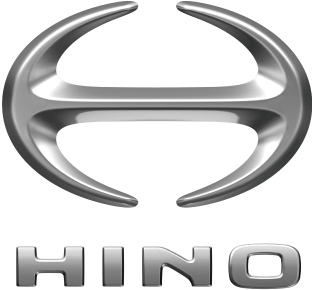Hyundai's Tucson has been a top-contender in its market segment since the first generation was launched in 2009. The Tucson's new sporty exterior design is recognized by its new front and rear appearance, the cascading grille, newly designed headlights, fog lamp and the refined new light signature, with full LED headlights, which give the car a high-tech image. An up-lifted front bumper and refined skid plate complement the Tucson's exterior appearance. The Tucson's interior is also new, sporting a redesigned dashboard with high-quality soft touch material, incorporating a double stitching line for a more high-quality feeling of the interior. The focal point of the center console is the floating audio system screen, which has an ergonomic position to allow drivers to stay focused on the road. The infotainment system in the Tucson offers a satellite navigation function used with one's Apple cell phone and CarPlay. Standard features include; air conditioner, Bluetooth, Cruise Control, headlight adjuster and rear parking sensors. At the rear, the Tucson sports a new rear taillight design, with a redesigned bumper and exhaust tailpipe to complete the picture. The side profile features a new design 19" alloy wheels for the flagship 1.6 TGDI Elite derivative.
The new Tucson range in South Africa comprises seven derivatives, with a choice of three engines - a naturally aspirated 2-litre petrol engine; a turbocharged 1,6-litre petrol engine; and a 2-litre turbocharged diesel - and three specification levels, and all derivatives front-wheel driven.
The facelift version of the third-generation Tucson of which 13 591 units have been sold in South Africa since its launch in 2016 - is available in 3 specification levels:
- Premium, for the entry-level derivatives, including cruise control, the infotainment system with a 7-inch touch screen, LED daytime running lights and driver, passenger, side and curtain airbags. The 4-cylinder, 2-litre naturally aspirated petrol engine, delivering 115 kW and 196 Nm maximum torque, is used for the Premium derivatives, in combination with a choice of either a 6-speed manual or 6-speed automatic gearbox.
- The Executive adds Electronic Stability Programme (ESP), full leather seats, Blind Spot Detection for side mirrors, Cross Traffic Alert detectors at the rear, electric seat adjustment for the driver and an auto air conditioner with climate control. The Executive derivative with the 2-litre petrol engine, linked to a 6-speed automatic gearbox, is a new addition to the range, as well as the Tucson R2.0 Executive with a 131 kW, 400 Nm 2-litre turbo-diesel engine with the new 8-speed automatic gearbox.
- The top-of-the-range Elite adds standard features such as a panoramic sun roof, electric seat adjustment for the front passenger, a push-button to start the engine and keyless entry. Another standard feature is the extra USB port in the rear, delivering additional power to recharge the devices on-board if needed.
Engines used in the Elite derivatives are the 2-litre petrol; the 2-litre turbo-diesel; and a 130 kW, 265 Nm turbocharged 4-cylinder petrol engine which is coupled with a 7-speed dual-clutch transmission. Hyundai's new in-house developed 7DCT transmission is a state-of-the-art gearbox. Compared with an automatic transmission, it enhances fuel consumption, CO2 emissions and performance while maintaining its high shifting quality.
For the ride and drive, the set route took us up the KZN North Coast and inland areas with some really bad tar roads and rough gravel roads, and for this I had the pleasure of driving the Tucson 1.6 TGDI Elite with the Dual Clutch Transmission. Driving the 1.6 TGDI Elite model, surprisingly the 1.6 litre turbo engine felt more powerful than expected in most situations and automatic transmission changes are smooth and almost imperceptible. Under hard acceleration from low speed, it was a bit sluggish, but once on the move, with the Dual Clutch Transmission selecting the right gear for the occasion, it gathers momentum quite rapidly. The suspension system is excellent as it comfortably irons out the very poor tar road surfaces, and even gravel roads with “washboard” corrugations were nicely smoothed out. The handling on gravel was very good, with the well weighted steering providing good handling, even on the rough sections and in fast cornering. The Tucson's ride and handling are quite sporty. The steering and road traction are predictable and competent, the ride is refined, and the cabin is super quiet at highway speeds - in fact first class for an SUV. Driving on the freeways, the Tucson 1.6 TGDI Elite runs unstressed, registering just 2 000 RPM while cruising at 120 km/h in 7th gear, and the tip recorder gave me a fuel reading of 9.6 litres per 100 km which is quite good, while wind and road noise are well controlled.
The recommended retail selling prices for the new seven derivative Hyundai Tucson range start at R399 900 for the 2.0 Premium (manual) to R569 900 for the Tucson R2.0 Elite Turbodiesel (automatic). All prices include a 5 year / 90 000 km service plan; a 7-year / 200 000 km warranty comprising Hyundai's 5-year / 150 000 km warranty, with an extended 2-year / 50 000 km drive-train warranty; Roadside assistance for 5 years or 150 000 and all service intervals are 15 000 km, with a mandatory initial 5 000 km service for the Tucson 1.6 TGDI Elite derivative.
Price list for the new 2019 Hyundai Tucson Range
- Tucson 2.0 Premium (manual) R399 900
- Tucson 2.0 Premium (automatic) R419 900
- Tucson 2.0 Executive (automatic) R459 900
- Tucson 2.0 Elite (automatic)R499 900
- Tucson R2.0 Executive Turbodiesel (automatic) R529 900
- Tucson 1.6 TGDI Elite (Dual Clutch Transmission) R559 900
- Tucson R2.0 Elite Turbodiesel (automatic) R569 900

